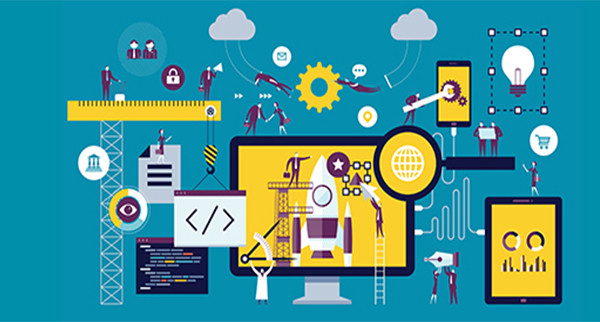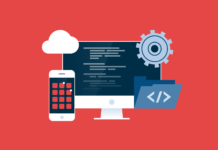Prototyping in the injection molding process as the main stage of production in the manufacturing area has a critical importance. This technique is based on the usage of molds, CAD models, and 3D printing to create parts of the final product. This pressure control unit (TCU), pressure settings (PSI), and field strength (MFR) are considered the outcome of the experiment.
To undergo repeated iterations, from acrylonitrile butadiene styrene to polypropylene, one must adhere to strict analysis. This step, key in the effort to test and improve the product, is being performed using FDM and SLA to double-check the dimensional precision and structural strength.
Understanding Prototyping!
Definition
- Prototyping in the injection molding process lays the groundwork for product development. It turns digital designs into tangible samples. Engineers test these prototypes for form, fit, and function. This early-stage trial mitigates risks and streamlines the manufacturing workflow, ensuring the final product meets exact specifications.
Purpose of prototyping
- Design Validation
Validating a design through prototyping is crucial. It checks if the product can be made as intended. Real-world testing of prototypes against design specs confirms manufacturability. This step saves time and resources by catching flaws early, proving the design’s feasibility in the injection molding process.
- Fit Testing
Fit testing ensures components mesh perfectly in the assembly. Prototyping identifies mismatches or gaps early. Adjustments are made before mass production. This crucial step prevents costly reworks and guarantees product integrity, essential in sectors demanding high precision.
- Functionality
Assessing a prototype’s functionality is pivotal. It ensures the product operates as designed under real-world conditions. Tests simulate use, exposing weaknesses for refinement. This process fine-tunes the mechanical and operational aspects, guaranteeing a functional end product from the injection molding process.
- Ergonomics
Ergonomics evaluation through prototyping enhances user interaction. It ensures the design is user-friendly and meets ergonomic standards. This focus on comfort and efficiency boosts product appeal and user satisfaction, making it a key consideration in the prototyping phase of the injection molding process.
The Prototyping Process in Injection Molding!
Material Selection for Prototypes
- Thermoplastics
Prototyping selects thermoplastics for their malleability and cost-efficiency. ABS and Polycarbonate lead due to their robustness and versatility. Essential for testing, these materials simulate final product characteristics, ensuring durability and function. Their selection is crucial for optimizing design, minimizing waste, and streamlining the manufacturing process.
- Elastomers
Elastomers shine in prototypes needing stretchability and resilience. Silicone and TPE models undergo rigorous flexibility and recovery tests. These materials aid in assessing wear and tear, contributing to product longevity. Their use in prototyping ensures that final products meet the highest standards of functionality and user comfort.
- Bio-Composites
Bio-composites merge ecological sustainability with prototyping needs. Materials like hemp-PLA combinations test the waters for green manufacturing. They allow for the evaluation of environmental impact without sacrificing performance. Prototyping with bio-composites not only supports eco-friendly design but also pioneers in sustainable innovation.
- Polyamides
Polyamides stand out for high-performance prototype requirements. Nylon, with its exceptional strength and heat resistance, faces stress tests to predict wear over time. Utilizing polyamides in prototyping phases ensures that the final products can withstand rigorous use, marking a path for durable and reliable manufacturing solutions.
Prototype Development Techniques
- 3D Printing
Polyamide and ABS melt and fuse resulting in an actual working prototype. This process enables intricate geometries to be created in a faster way at a fraction of manufacturing costs, advancing the pace of design tip cycles. By adding this in, the feedback can be incorporated as soon as possible, so learning shapes up rather than stagnation as well as speed.
- CNC Machining
CNC machining, which has no match when it comes to precision prototyping, is a viable choice. It fulfills this function by cutting out the material of those solid rectangular blocks and returning parts that mirror the actual prototype. Metal and plastic machining materials are easily shaped; also learn how they function and how they will be assembled. Such a method has the advantage that it can be applied to create prototypes of high fidelity and with finished material properties.
- Rapid Tooling
A technique of producing tools (mold or jig) for prototyping and its subsequent part (or a fully functional product) in a relatively short period of time is named rapid tooling, and it significantly decreases the time-to-market.
It uses modular molds and even 3D designated injection molding, very quickly lowering the lead times and cost-effectively. This method not only confirms the design feasibility but also the functionality coupled with the readiness to take the production plan into action.
- SLA/SLS
SLA (Stereolithography) and SLS (Selective Laser Sintering) enable an enhanced prototype resolution and the materialistic property depth in the prototyping.
SLA hardens liquid resin to numerous solids apart, while SLS melts powder and gives rise to the complex three-dimensional structures such technologies allow for the examination of complicated patterns as well aided in improving the product elements, which is crucial for developing injection molding items.
Benefits of Prototyping in Injection Molding!
- Design Improvement
Prototyping is the key that switches the product design from conditions to reality, and the prototyping process is very efficient. The Beta version facilitates the continuous testing cycle, leading to enhanced features, and sprucing up the UI. The critical review during these stages optimizes the finished product for elevated characteristics. Production is finely tuned with users’ requests and design capabilities in the future.
- Risk Reduction
When the prototype of the project is done in an early stage of the project, it helps to lower its risks. It does the job of error-finding and even corrections of blueprints before the production phase starts where the already corrected ones will have more chance to survive. This preempts cost in man-hours and materials, excluding only tested designs entering the final construction stages.
- Speed to Market
Prototyping shaves off elements that will be disliked by consumer products and adds characteristics that will appeal to them. It’s crucial for prototyping new products; it supports the development based on user feedback and quicker verification of design assumptions. The power of speed is indeed important as it lets organizations cut on time and perform quicker which gives them an advantage in the market.
- Cost Efficiency
With detection beforehand of possible problems prototyping makes sure that resource is optimized and there is almost no waste. It makes materials and labor more effective and thereby more cost-effective. The use of cost-effective approaches such as prototype and production moldings among other things substantially reduces the production cost of the developed product over its life cycle.
Conclusion
At the same time, prototyping in the injection molding process is in a way ideal model of this process allowing the creation of high-performance end products with a lack of any defects whatsoever at least on that level. It catalyzes iterating the refinement process, anticipates risks as well, and increases the design accuracy. For the ones wishing for the upgrading of the manufacturing industry, this guide is your way of progress. Embrace the use of augmented prototyping as a tool for the application of injection molding solutions to overcome the complexity of the process with confidence.















